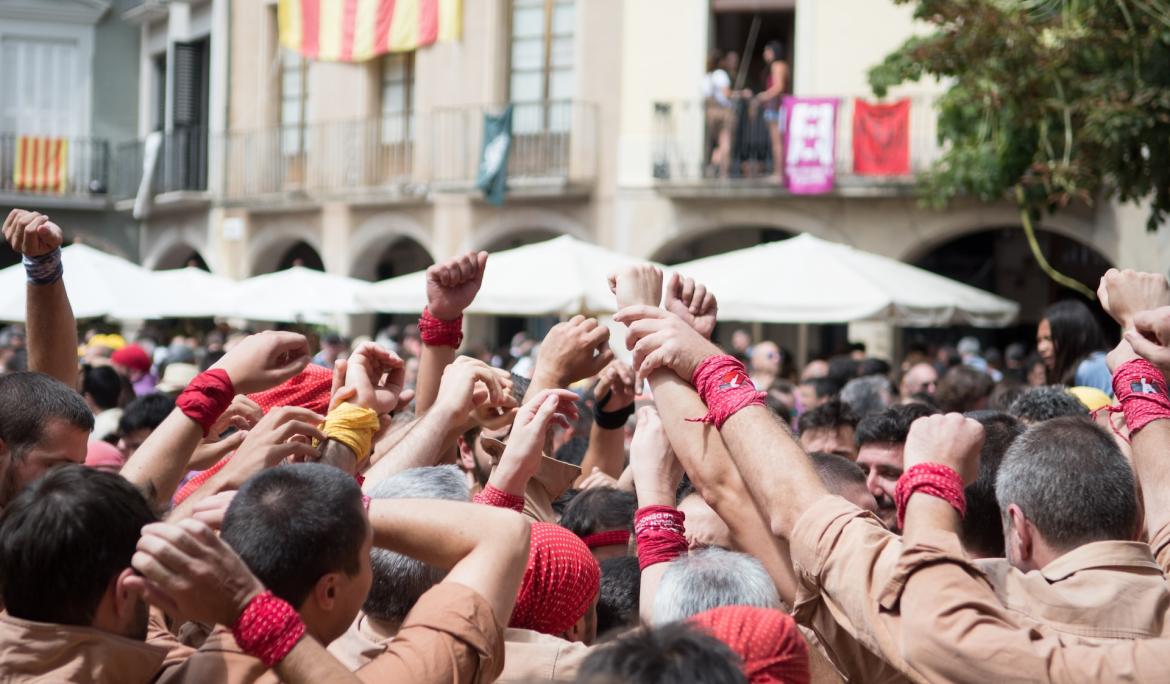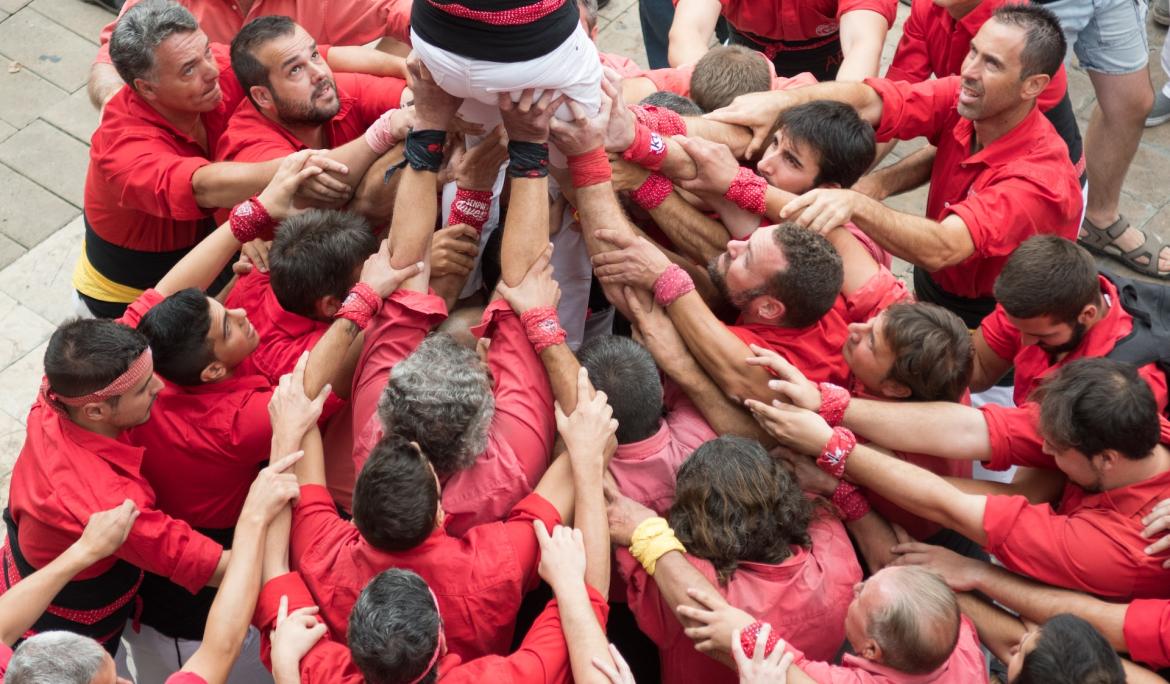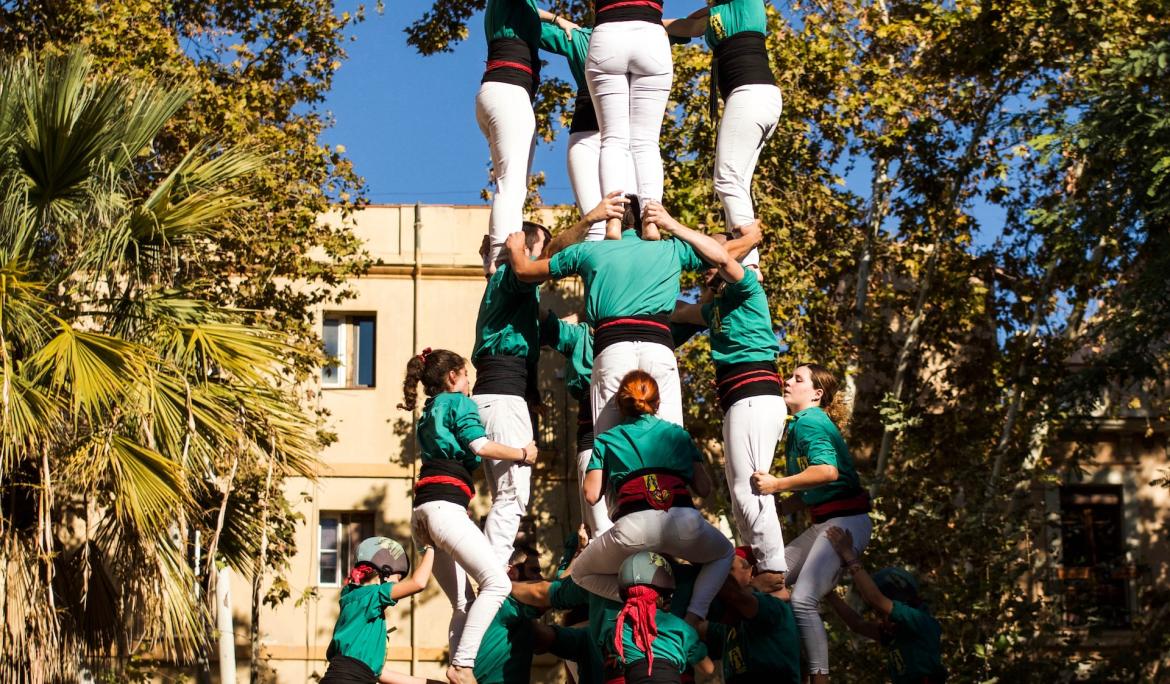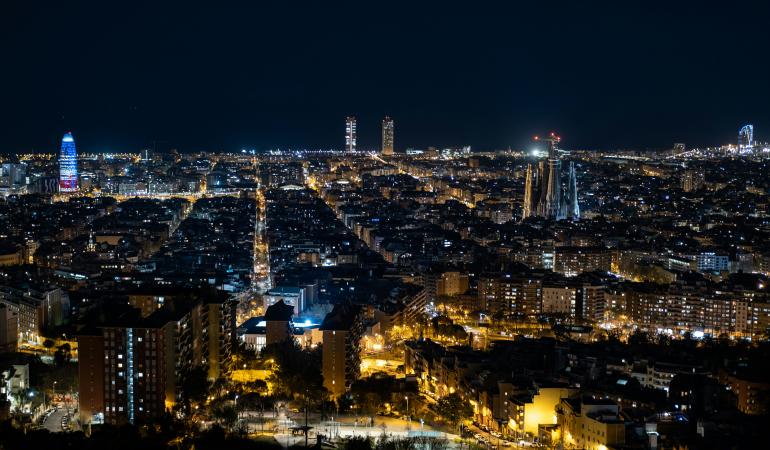Castells are human constructions that symbolize strength and cohesion and are one of the most recognized Catalan traditions throughout the world. Discover more about its cultural wealth, Hola Barcelona takes you there!

History and origins
The tradition of castells has a very deep history in Catalonia. It is believed that this practice had its origins in the regions of Tarragona during the 18th century. Initially, castells were a form of popular entertainment, but over time, this practice would become a deeply rooted cultural tradition in Catalonia. The first documented castle "castell de sis sostres, acompanyat de la dolçaina") dates back to the year 1770 in L'Arboç (Baix Penedès).
Human architecture
The castells are human towers, built with a technique that requires great coordination and skill. The castellers are placed one on top of the other, forming several floors, until an impressive structure is created that can be very tall. The people who are part of the castle are called "castellers".
A castle consists of various well-defined parts. At the base is the "pinya", the towers that donate support to the human tower and form the base of the castle. Just above them is the "tronc", which is the different floors that make up the castle. Above the pillar is the "pom de dalt" format pels dosos, l'aixecador i per últim; l'"enxaneta", which crowns the highest tower as a symbol of victory.
These castles receive specific names based on their height and the number of people per floor. The first number represents the rows (pillars) that form each level of the "tronc", and the second number, the total number of floors. Some examples include the "3 de 9 amb folre" which is a castle with 9 floors high and 3 people per floor in its tronc or the "4 de 8" which consists of 8 floors high and 4 castellers per floor in its tronc , except for the three upper floors that are formed by a pair of doso, a lifter and an enxaneta. The name helps to classify them according to their difficulty and success.
The castellers' costumes are an important part of this tradition. The members of the colles castelleres usually dress in colored shirts and white pants, along with other elements such as sashes or handkerchiefs. This traditional clothing helps create a unified image and highlights the importance of cohesion and harmony in the formation of the castells.
Colles Castelleres
The Colles Castelleres are the groups that practice this tradition. There are more than 100 colles castelleres throughout Catalonia (Xiquets de Valls, Xiquets de Vilafranca, Xiquets de Tarragona, Colla Castellera de Barcelona, etc.), and each of them has its own history and identity. The groups spend many hours training and preparing for performances, and competitions between them are a key part of the castellera season. This camaraderie and healthy competition strengthens the bond between the castellers and keeps this unique tradition alive.
The castells are not only a demonstration of physical ability, but also a symbol of unity and community determination. This tradition, full of admiration and respect, continues to be an essential part of the Catalan identity. Check out all the festivals with a castellers presence, starting with the Festes de la Mercè that is very close and go ahead and enjoy it live, Hola Barcelona takes you there!




